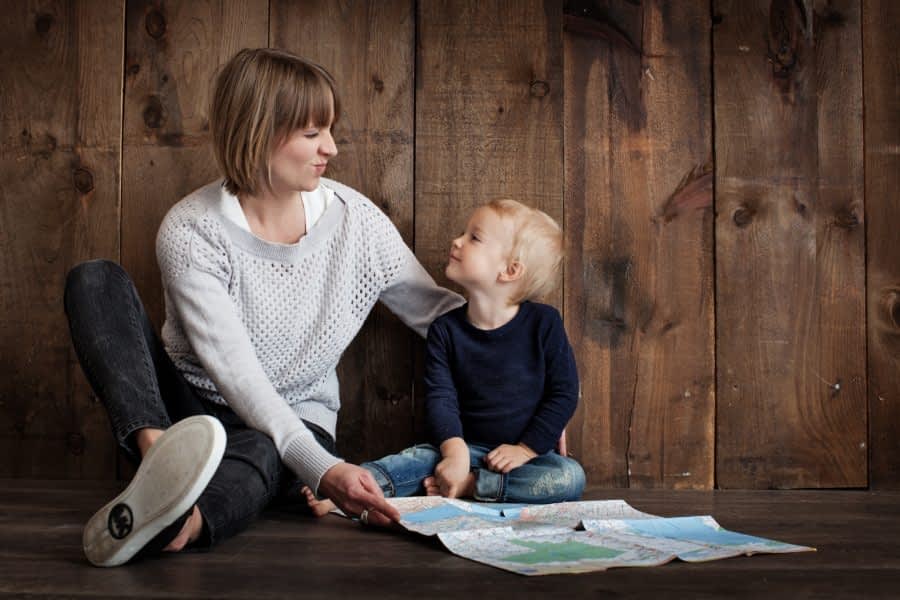
As discussed in Part I of this series, emotional regulation is the ability to regulate our emotions to adapt to our environments. It is crucial to the quality of our socio-emotional development, academic growth, and overall well-being. While emotional regulation can be almost second nature for most, there are individuals who struggle and need to be taught how to use this skill. The app mentioned in the previous article, Mightier, is an amazing tool in teaching this skill.
One of the key advantages Mightier has in teaching emotional regulation is its ability to help the user experience the process of self-regulating within their own bodies rather than observing the behaviors modeled by another person. Essentially, what Mightier does is help children identify the physical changes that happen when heightened emotions strike, such as increased heart rate, tenseness, or sweating. One of the researchers studying the effectiveness of Mightier used the analogy of teaching someone to ride a bike. When teaching your child to ride a bike, you take them outside, give them a bike, and help them practice until they get it. You don’t expect them to learn by putting them in an office, handing them a manual, and hoping they figure it out. It is the same with teaching emotional regulation. Experiencing first-hand what it feels like to calm themselves down is more effective for children to generalize that to real-world situations, like the home or classroom.
Though the calming strategies used by Mightier are useful in teaching emotional regulation, they are certainly not the only way. It is also essential for kids to know how and why emotional regulation is important, along with understanding how their bodies have gotten to the point of emotional dysregulation. The next three sections will discuss emotional awareness, social awareness, and additional calming strategies you can use if you don’t have the app.
Emotional Awareness
Emotional awareness is the ability to recognize your own emotions and the emotions of others. This is the first step to being able to regulate your own emotions. For young children, it starts with teaching them what different emotions are. For example, what does it mean to be happy, mad, sad, or afraid? Once they can identify what they are feeling they are already on their way to being great emotional regulators! Why? This is because now they have the option of verbally expressing their emotion instead of showing their emotion through inappropriate, disruptive, or dangerous behavior. It can relieve an element of stress or anxiety being able to voice your feelings, whether it’s verbally or through other means of communication.
Some activities that can be helpful in developing emotional awareness are using an emotions chart, playing emotions charades, and watching video clips or movies demonstrating different emotions. Pixar’s movie Inside Out is a great one to watch and discuss with your children to help them start to identify their emotions. Another activity is teaching the appropriate emotional response to the problems they face.
Social Awareness
Once emotional awareness is established, it is then important for kids to learn social awareness. Social awareness is being aware of the way you react to social situations and affect individuals around you. Oftentimes children who are unable to appropriately regulate their emotions struggle with making and keeping friends because they are unaware of the effects their strong emotional reactions have on others. What they don’t realize is that the more emotional outbursts they have, the more their peers or classmates begin to shy away from them for fear of being at the brunt of their reactions.
These outbursts can happen so abruptly and over the smallest things that it becomes difficult to predict, leading classmates to tend to avoid that student. Fortunately, teaching children who have difficulty regulating how to empathize can provide motivation to self-regulate. Studies show that there is a correlation between our relationship bonds and our social behaviors. Humans innately desire a sense of belonging and when there is a lack of relationship bonds it can be detrimental to one’s well-being.
A sense of belonging can motivate children to self-regulate, but some children need to be taught social skills in order to appropriately connect with others. For example, children with certain disorders such as ADHD and Autism Spectrum Disorder naturally struggle to understand and pick up on social cues. Simply asking your children how they think others are feeling is a good way to start. Commenting on an individual’s facial expressions and body language to demonstrate how they can interpret how others feel based on how they look is another way to introduce the idea of perspective taking.
One activity you can try with your children or students would be the crumpled paper lesson, which is an activity most effective with older children and teaches the lasting effect our words can have on others. The Bubble Talk board game is another a fun way to help children identify what someone is thinking or feeling based on how they look in a picture.
Calming Strategies
Children should always know they have a way out of a stressful or anxiety-provoking situation. The worst thing we can do as a parent or educator is force them to do something when they are overstimulated and unable to handle it emotionally. We should consider that each child’s needs are unique. The way each person learns best and how they handle difficult situations can differ. With this in mind, there are an array of strategies to use, so we must therefore be open-minded and flexible to try new things until we find what works. This is not a one-size-fits-all solution, but there are some basic strategies we can build from.
Taking Deep Breaths is one of the most basic and simple ways to calm down that you can do virtually anywhere. Different ways to try this include counting your breaths, placing your hands on your stomach while breathing, or blowing bubbles to control breathing.
Taking Breaks is a great way to calm down. Figuring out a child’s interests or providing sensory support help make their breaks more personal and effective. It could be listening to music, playing a game, reading a book, taking a walk or taking a nap. Along with breaks that adhere to the child’s interests, it also helps to have tools that meet their sensory needs. For example, items that are visually calming such as snow globes, light-up toys, or sensory bottles are useful in helping the child take control of their body.. Olfactory sensory support would include calming essential oils and auditory support such as noise-canceling headphones or music. Using a fidget toy or stress ball can help provide tactile support.
Create a Calm-Down Box in your classroom or home for your children to access tools for calming down their bodies and minds. This can be used when your child needs a sensory break, using personally selected tools according to the child’s individual needs and interests, as discussed in the above section. To create this box, simply provide tools mentioned at this helpful site, such as a chewie necklace/toy, a weighted blanket, or a puzzle. This box allows the child to feel a sense of independence and agency. This very act of providing them with a choice for what tools they will use already brings a sense of calm because the child has been given control over his/her situation. This helps teach them that they are capable of regulating their own minds and bodies.
Emotional regulation tools are useful universally, regardless of disability or needs. We can all benefit from learning how to better regulate and gain control of our bodies. The tools mentioned in this article are meant to be a launching pad for further growth and development in learning emotional regulation. Just like learning to ride a bike, emotional regulation takes practice. Rather than provide an instruction manual to strictly follow, these tools are meant to guide you and your child to find what works best. Emotional regulation does more than simply help you manage your child’s behavior. Your child’s ability to emotionally regulate will relieve their anxiety, lead to stronger relationships with peers, and build their confidence as they begin to gain control of their bodies, thus setting them on a path toward a brighter future.

